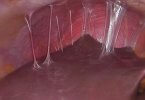What's in this article?
Eye twitching, eyelid spasm and blepharospasm are terms used to refer to any of three separate conditions. They each have different causes, and one doesn’t lead to the other.
Eyelid twitching (myokymia) affects only the eyelid. It can involve either the upper or lower lid, but only one eye at a time. The eye twitching can range from barely noticeable to bothersome. The twitching usually goes away within a short time but may recur over a few hours, days or longer.
Benign essential blepharospasm starts out as increased blinking of both eyes and may progress to the eyelids being squeezed shut. This type of eye twitching is relatively uncommon but can be extremely severe, affecting all aspects of life.
Hemifacial spasm involves twitches of muscles on one side of the face, including the eyelid.
Eye twitching is a repetitive, uncontrollable blinking or spasm of the eyelid, usually the upper lid.
Eye twitching (blepharospasm) often affects the eye muscles of both eyes. If you have eye twitching, you may have an involuntary movement that recurs every several seconds for a minute or two.
Most people develop a minor eyelid twitch at some point in their lives. Although the cause is generally unknown, it may be associated with:
- Fatigue
- Stress
- Caffeine
This minor form of twitch is painless and harmless. It usually goes away on its own. But it can be quite annoying. And that’s especially true if the spasms are strong enough to cause the eyelids to completely shut and then reopen.
In some cases eye twitching is more than a temporary nuisance. Some people have spasms that occur frequently throughout the day. Symptoms can recur for days, weeks, or even months. That can cause a lot of emotional distress. It can interfere with quality of life.
In its most serious forms, which are relatively uncommon, eye twitching can become chronic. It can cause persistent winking and squinting. If it progresses to the point where you have difficulty keeping your eyes open, it can cause severe vision impairment.
Sometimes, eye twitching can be a sign of eye conditions such as:
- Blepharitis (inflammation of the eyelids)
- Dry eyes
- Light sensitivity
- Pink eye
Very rarely, it can be a sign of a brain or nerve disorder, such as:
- Bell’s palsy
- Dystonia
- Parkinson’s disease
- Tourette’s syndrome
Eye twitching can also be a side effect of certain medications. The most common offenders include drugs used in the treatment of psychosis and epilepsy.
Causes of Eye twitching
The most common things that make the muscle in your eyelid twitch are fatigue, stress, and caffeine. Once spasms begin, they may continue off and on for a few days. Then, they disappear. Most people have this type of eyelid twitch once in a while and find it very annoying. In most cases, you won’t even notice when the twitch has stopped.
More severe contractions, where the eyelid completely closes, are possible. These can be caused by irritation of the surface of the eye (cornea) or the membranes lining the eyelids (conjunctiva).
Sometimes, the reason your eyelid is twitching cannot be found. This form of eyelid twitching lasts much longer and is often very uncomfortable. It can also cause your eyelids to close completely.
Complications of Eyelid Twitches
Very rarely, eyelid spasms are a symptom of a more serious brain or nerve disorder. When the eyelid twitches are a result of these more serious conditions, they are almost always accompanied by other symptoms. Brain and nerve disorders that may cause eyelid twitches include:
- Bell’s palsy (facial palsy), which is a condition that causes one side of your face to droop downward
- dystonia, which causes unexpected muscle spasms and the affected area’s body part to twist or contort
- cervical dystonia (spasmodic torticollis), which causes the neck to randomly spasm and the head to twist into uncomfortable positions
- multiple sclerosis (MS), which is a disease of the central nervous system that causes cognitive and movement problems, as well as fatigue
- Parkinson’s disease, which can cause trembling limbs, muscle stiffness, balance problems, and difficulty speaking
- Tourette’s syndrome, which is characterized by involuntary movement and verbal tics
Undiagnosed corneal scratches can also cause chronic eyelid twitches. If you think you have an eye injury, see your optometrist immediately. Corneal scratches can cause permanent eye damage.
Types of Eye Twitching
There are three common types of eye twitch:
- Minor eyelid twitch
- Benign essential blepharospasm
- Hemifacial spasm
Minor eyelid twitch is often associated with lifestyle factors, such as:
- Fatigue
- Stress
- Lack of sleep
- Use of alcohol, tobacco, or caffeine
Minor eyelid twitch also can be caused by irritation of the surface of the eye (cornea) or the membranes lining the eyelids (conjunctiva).
Sometimes the cause of minor eyelid twitch cannot be identified. In almost all cases it is painless and harmless.
Treatment for Eye Twitching
Eyelid twitching most often goes away without treatment. In the meantime, the following steps may help:
- Get more sleep.
- Drink less caffeine.
- Lubricate your eyes with eye drops.
If twitching is severe or lasts a long time, small injections of botulinum toxin can control the spasms.





